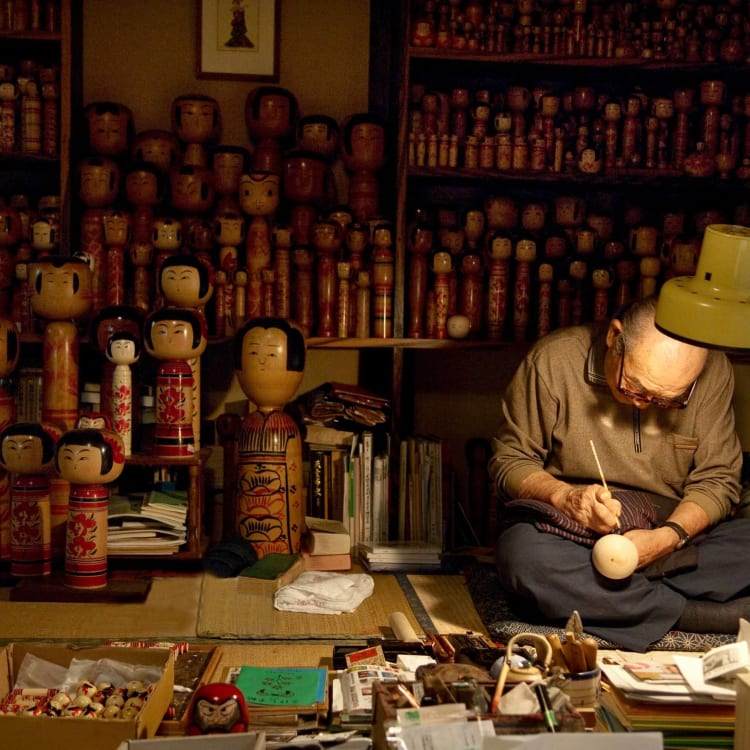
STORY 7 traditional crafts and souvenirs from different regions in Japan
7 traditional crafts and souvenirs from Japan
Japan is a country with a rich and varied tradition of crafts and folk arts that capture the spirit and essence of the Japanese experience and culture.
Japanese crafts have been cultivated over an extensive history and passed down from generation to generation (and many through centuries). The craftsmanship and art behind these traditional crafts are one-of-a-kind, boasting specialised skills and techniques not found anywhere in the world.
These crafts make not only amazing works of art but also unique and authentic Japanese souvenirs to take back home or to a loved one.
Here are 7 traditional crafts and souvenirs to check out.
1. Eyeglasses
Sabae City, Fukui Prefecture
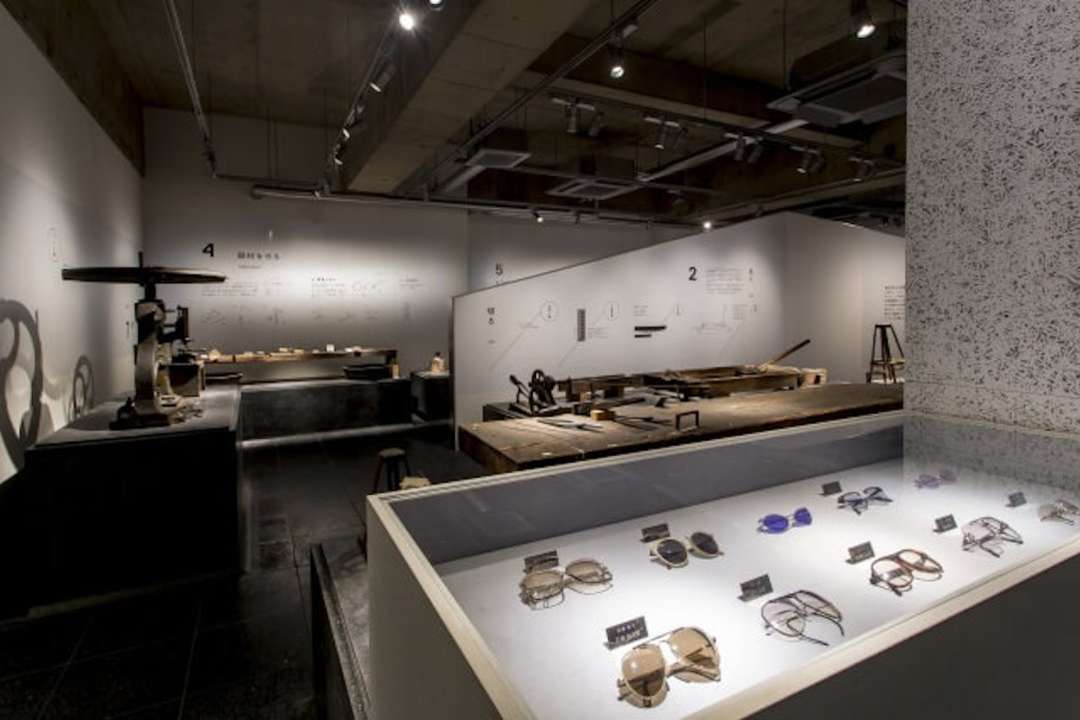
Glasses from Sabae City, Fukui Prefecture. Image: Fukui Prefectural Tourism Federation
If you’re heading to Fukui Prefecture, visit Sabae, known as the ‘City of Glasses’ to take home some of the best quality eyewear available in the world.
The birth of Fukui and Sabae glasses dates back to the early 20th century in the town of present-day Shono, Fukui City, which was then a rural farming village that was often buried by snow during the winter months. Local farmer Gozaemon Masunaga saw eyewear production as an opportunity to improve the lives of the villagers by bringing in income during the farming off-season and invited skilled craftsmen from Osaka to teach the residents the art of eyewear production. Production then spread to Sabae when the popularisation of print literature increased demand for eyeglasses, and the city has since grown to become a major glasses manufacturing area.
Currently, the cities of Fukui and Sabae in Fukui Prefecture produce around 95% of all eyeglass frames that are made in Japan. In 1983, Sabae’s glasses manufacturing industry gained worldwide attention by commercialising the world’s first titanium frame glasses. With its advanced titanium processing technology, Sabae continues to play a major role in contributing to different fields including the medical and electronic industries.
2. Knives, cutlery and everything in between
Seki City, Gifu Prefecture
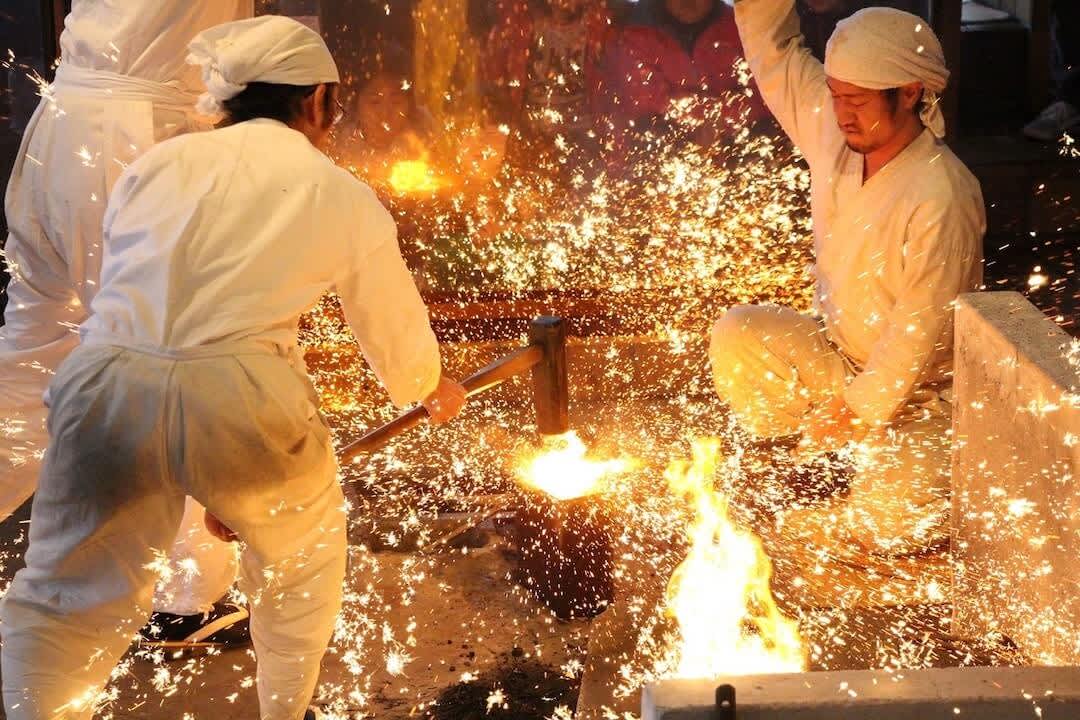
Demonstration of traditional sword forging at the Seki Traditional Swordsmith Museum, Gifu Prefecture.
After some high-quality cutlery and blades? Look no further than the city of Seki, Gifu Prefecture. The birthplace of Mino sword making, Seki was once renowned for samurai swords and is now famous for its production of high-quality blades. Producing everything from traditional Japanese swords to sought-after cutlery, the choices of blades are endless in Seki.
Dating back to the 1300s, the famous swordsmiths Motoshige and Kaneshige set up a blacksmith shop in Seki as they deemed it an ideal place for sword creation due to the abundance of raw materials available for sword production. The region soon became known amongst samurai and the blades produced were described as ‘unbreakable, unbendable and extremely sharp’.
In modern times, the secret to their stellar quality blades is attributed to how manufacturers in Seki have fused traditional sword-smithing techniques and knowledge with modern-day technology.
In Seki, you will find over 100 blade manufacturers and 10 active swordsmiths. From kitchen to hunting knives, fingernail clippers to hairstyling tools, scissors to medical equipment - the city’s premium blades come in all forms, shapes and sizes. The perfect souvenir to take back home - beautiful and practical!
3. Arita ware
Arita, Saga Prefecture
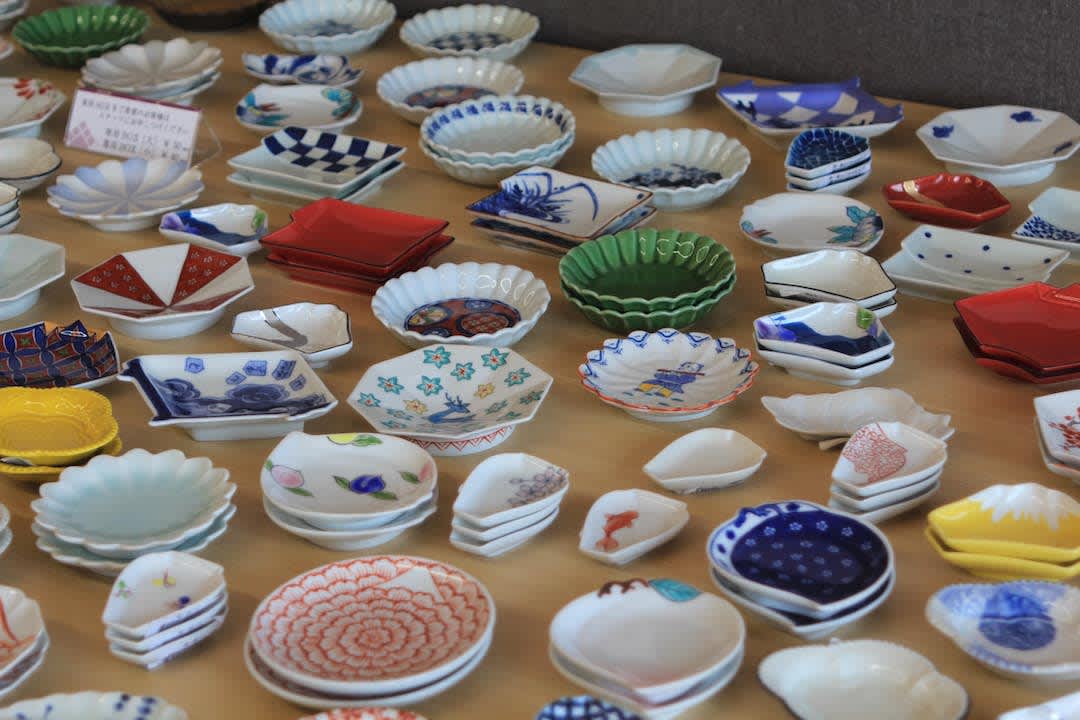
Arita ware in Saga Prefecture displayed on a table.
Arita ware refers to porcelain made in the town of Arita, which is considered to be the birthplace of porcelain in Japan and surrounding areas in Saga Prefecture. During the Edo Period (1603-1867), porcelain made in Arita was shipped through Imari Port so they were sometimes also referred to as Imari ware.
The story of Arita ware traces back to 1616 when Korean ceramist Yi Sam-pyeong discovered a deposit of porcelain stone, the raw material used to produce porcelain, in Izumiyama (present-day Arita). Centuries later, Arita ware continues to be famous in Japan and has been loved by admirers from around the world, including royals and nobility.
Originally, Arita ware was characterised by blue designs on a white background but this has evolved over the years. Now you can find Arita ware decorated with vibrant paintings and colours - a perfect souvenir boasting years of history to take back home with you.
In addition to browsing shops selling colourful Arita ware consider a visit to the unique Tozan Shrine, which features a porcelain torii gate, and the Kyushu Ceramic Museum to learn more about the region and its history of ceramic production. If you’re in Arita during Golden Week (late April to early May), don’t miss one of Japan’s largest ceramic fairs, the Arita Ceramic Fair.
4. Kokeshi dolls
Tohoku region
![]()
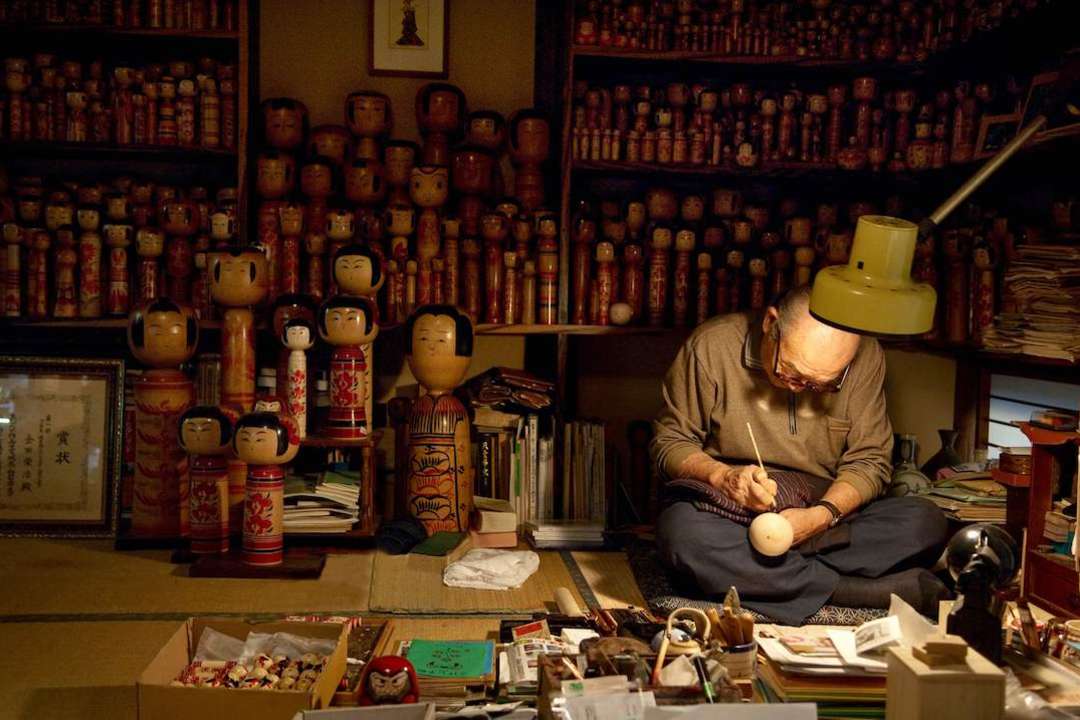
Hand-made kokeshi dolls in Yamagata Prefecture.
In the Tohoku region (Aomori, Akita, Iwate, Yamagata, Miyagi and Fukushima Prefectures) of Japan, you can find beautifully decorated hand-made wooden dolls known as kokeshi dolls. They typically feature a cylindrical trunk decorated with patterns and a spherical head with a painted face. Unlike most western-style dolls, kokeshi dolls do not have defined hands, legs or feet but instead display a minimalistic structure.
The history of kokeshi dolls stems from the mountain areas of the Tohoku region where woodturners worked with lathes to create bowls, trays and more. The first ever kokeshi dolls are believed to be toys that were made by these woodturners between jobs.
Over the years, the dolls have varied in facial features, body shapes and painted patterns. They have grown in popularity and are also celebrated as one of Japan’s folk arts. There are still 11 traditional types of kokeshi dolls still being made in the 6 prefectures of the Tohoku region today. They are a wonderful example of a traditional craft where passionate artisans use time-honoured techniques to create both classic and modern designs in order to connect with new generations.
In addition to the unique qualities each artisan brings to the dolls, every single one of them is crafted by hand, so no two kokeshi dolls are alike. Kokeshi dolls can be used as ornaments, gifts, collection items or decorations and are a beautiful symbol of Japanese culture to take home as a memento or gift to a loved one.
5. Nishijin textiles
Kyoto Prefecture
![]()

Nishijin textiles featured at a kimono show at Nishijin Textile Center, Kyoto Prefecture. Image: Belle Hung/Shutterstock.com
Nothing is more authentically Japanese than a beautiful kimono, such as one made with vibrant Nishijin-ori (Nishijin fabric). Designated as a National Traditional Craft in 1976, this beautiful silk fabric is renowned for its three-dimensional appearance and diverse colours and boasts a history dating back over 12,000 years.
Crafted in the Nishijin area of Kyoto, Nishijin-ori is typically made from brilliantly dyed silk interwoven with lavish gold and silver threads into intricate patterns. Considered a luxury fabric, Nishijin-ori has remained popular and is commonly used in kimonos, obi (a long belt used to tie around traditional clothing such as kimonos), festival floats and noh (traditional Japanese theatre) stage costumes. In modern times, this beautifully woven textile can be found in everyday products, from accessories such as neckties, wallets and bags to household items like table runners.
When in Kyoto, you can take a first-hand look at the history of Nishijin-ori at the Nishijin Textile Center. Here, you can experience demonstrations of the traditional craft. You will also be introduced to kimono shows, historical archives and presentations of Nishijin textiles. Last but not least, you can also join a handweaving workshop to craft your own original item which you can take home with you as a souvenir!
6. Gold leaf
Kanazawa City, Ishikawa Prefecture
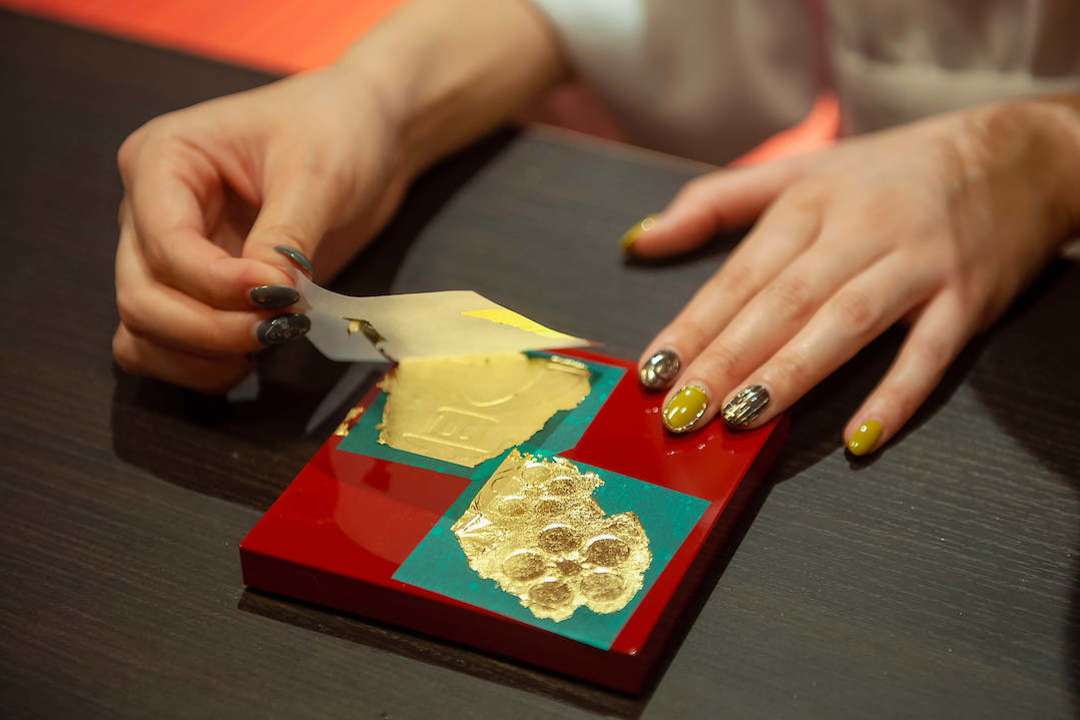
Gold leaf, a symbol of Ishikawa.
The city of Kanazawa has flourished as a centre for traditional crafts since the 17th century and was recognised by UNESCO as a city of Crafts and Folk Art in 2009. It is especially well-known for its production of gold leaf, which was believed to have been introduced from Kyoto in 1593, and currently makes 99% of Japan’s gold leaf.
Two types of gold leaf are produced in Kanazawa: entsuke and tachikiri. Entsuke gold leaf is unique to Kanazawa and is created using traditional materials and techniques. Skilled artisans hammer and stretch the gold between sheets of special hand-made washi paper until it is around 1/10,000 of a millimetre thick. Tachikiri gold leaf is manufactured using modern methods to enable mass production and was developed in the 1960s.
In 2014, Japan certified entsuke gold leaf as a Selected Conservation Technique, and in 2020 it was added by UNESCO to its Intangible Cultural Heritage list. The entsuke technique continues to be passed on by just a handful of artisans. Due to the high level of skill and knowledge needed to produce entsuke gold leaf, there are just over 10 artisans in Kanazawa capable of creating it.
Kanazawa gold leaf is used in tableware, ceramics and in other traditional crafts such as Nishijin brocade. It has also been used to decorate many National Treasures in Japan such as Hongwanji Kanazawa Betsuin in Ishikawa Prefecture, where the inner temple was restored in 1993 using etsuke gold leaf. See this traditional craft’s stunning colour and brilliance first-hand in just a 10-minute walk from Kanazawa Station.
You can also visit the Kanazawa Yasue Gold Leaf Museum which houses a collection of around 300 pieces of art and crafts works embellished in gold leaf from the Edo Period (1603-1867) to the present day. Several shops around Kanazawa also let visitors see the gold leaf making process and host workshops where you can decorate your own items, including chopsticks, cosmetics, containers, small plates, and mirrors - the perfect souvenir to take home from Kanazawa.
7. Ryuku glassware
Okinawa Prefecture

Ryukyu glassware in Okinawa Prefecture. Image ©OCVB
Glass production in Okinawa (previously known as the Ryukyu Kingdom) began in the early Meiji Era (1868-1912) when glass workers from Kagoshima Prefecture brought their expertise to Okinawa. A number of glass workshops were set up in Naha, the central city of Okinawa, where artisans started making stunning glass products by hand.
At first, the glass that was created was transparent. However, increased demand for glassware coupled with a shortage of raw materials in the post-war period led to craftsmen recycling glass bottles and glass scraps to create new products. This led to the creation of coloured glassware, with amber colours coming from beer bottles and light blue from window glass. Many products also contained air bubbles due to impurities from the original glass. Once considered defects, these bubbles, along with the colours of the glassware, have now become characteristics of what is known as Ryuku glass.
Artisans now take inspiration from Okinawa’s beautiful sea, sky and colourful flowers to make the glassware. Recycled glass is still used as raw materials in some places, but the colours of the glassware can also come from the addition of certain chemical elements, and techniques have since been developed to create bubbles in the glass.
These days, Ryuku glass is not just a popular souvenir but is also officially recognised as a traditional craft of Okinawa Prefecture. It comes in many forms, from tableware including glasses and plates to home decor like wind chimes and centrepieces. You can purchase Ryukyu glass products at shops across Okinawa and can also make your own glass or other glass crafts in a hands-on workshop.



















































